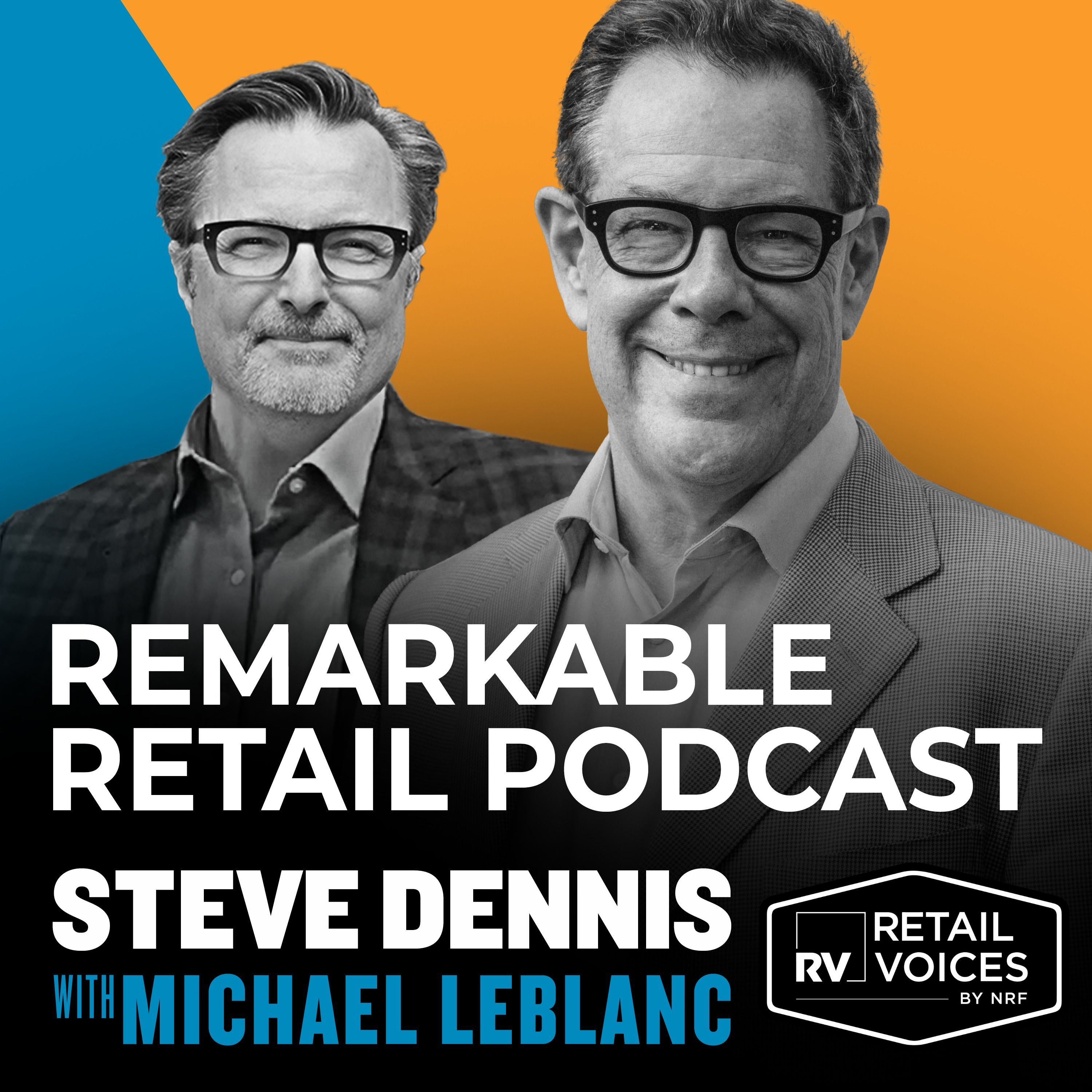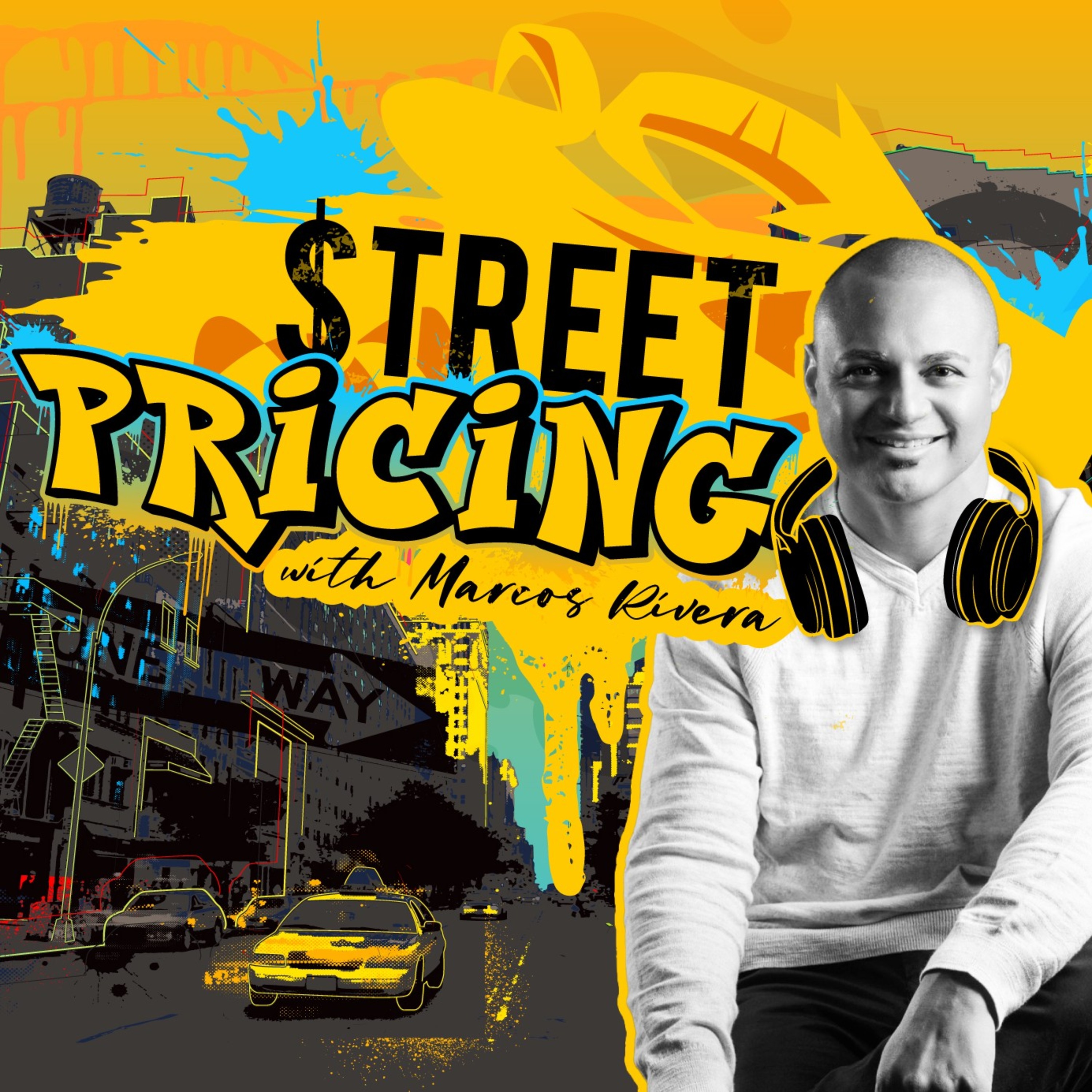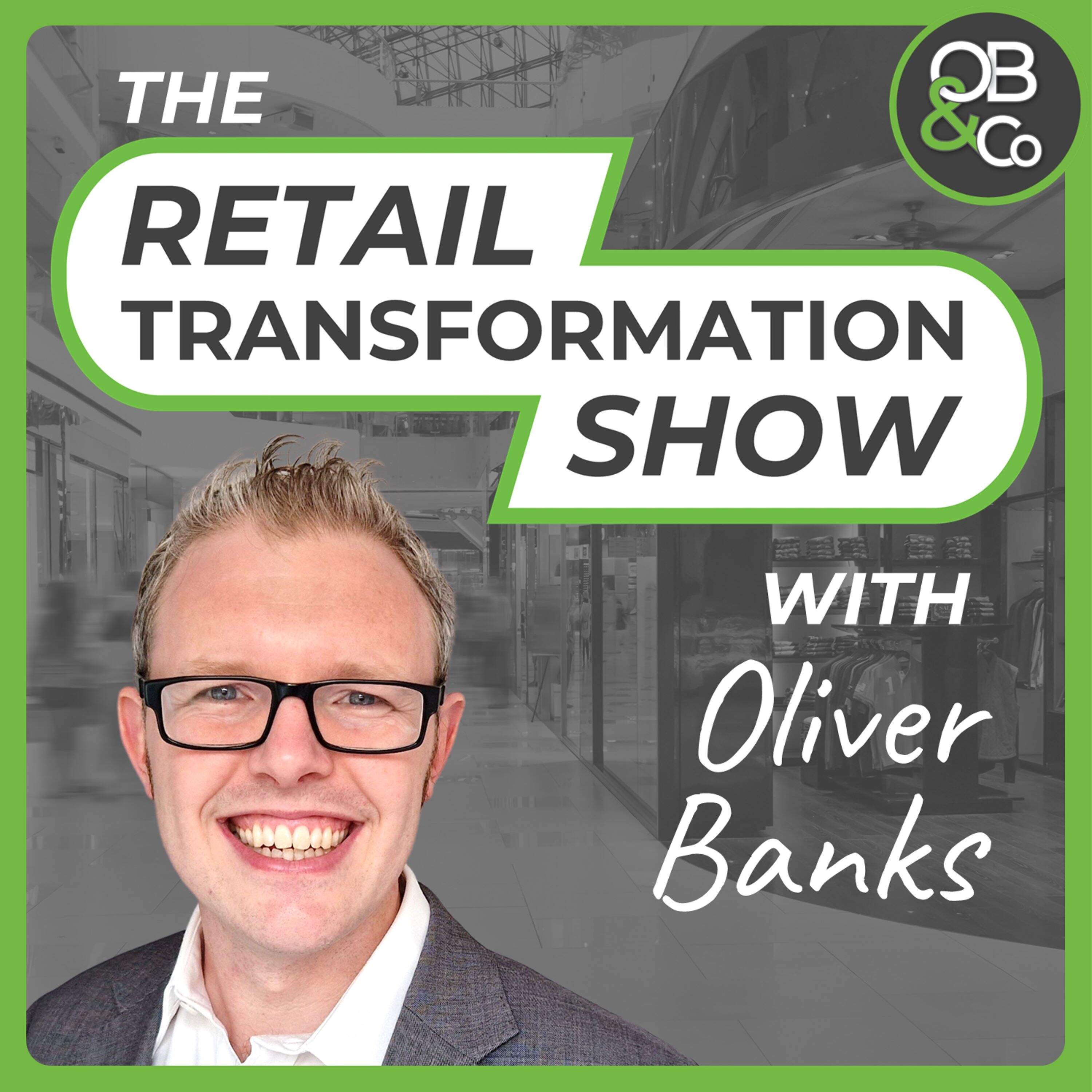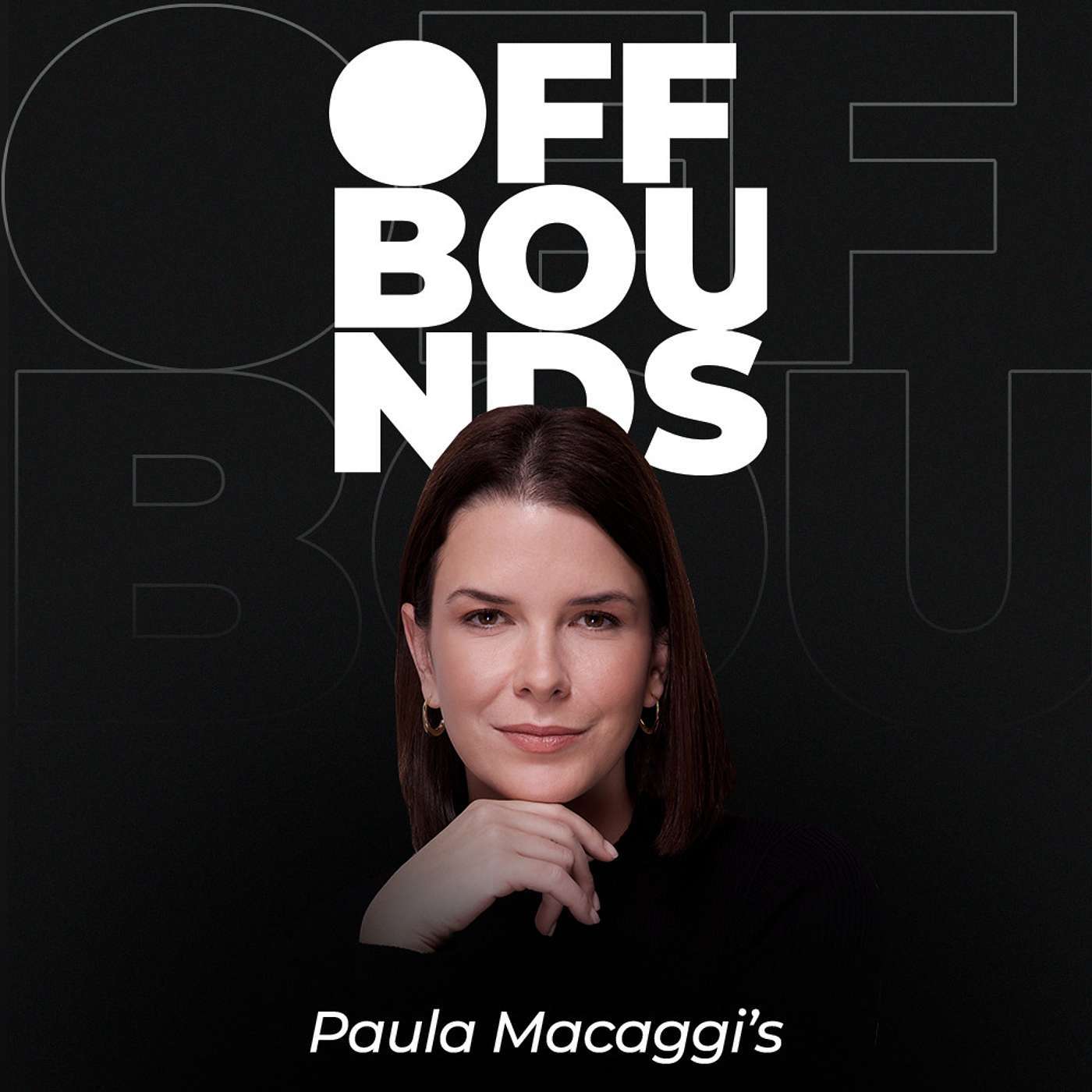
Pricing Heroes: The Retail Pricing Podcast for Practitioners & Executives
Pricing Heroes: The Best Retail Pricing Podcast for Practitioners and Executives
Your go-to pricing podcast for transforming strategy, boosting margins, and leading with confidence.
Pricing Heroes is the leading retail pricing podcast for pricing practitioners and retail executives focused on building smarter strategies, protecting margins, and earning customer trust. Each month, we feature exclusive interviews, case studies, and practical insights to help you implement the most effective pricing strategies for today’s retail environment.
Whether you're managing promotional calendars, navigating price perception, or scaling AI-powered pricing systems, Pricing Heroes offers the expert guidance and real-world perspective you need to lead with confidence.
🎙 Each episode includes:
- Expert Interviews: Candid conversations with top pricing professionals and retail innovators
- Case Study Analysis: Behind-the-scenes strategy breakdowns from across the industry
- Actionable Takeaways: Practical insights you can apply immediately in your organization
We explore the full landscape of pricing in retail — spanning e-commerce and in-store, global brands and regional players, and categories from fashion and grocery to electronics and beyond. Topics include:
- Innovative pricing technologies and emerging trends, like AI-powered pricing platforms
- Data-driven consumer behavior analysis
- Strategic solutions to complex pricing challenges
- Tactics to boost profit margins and market share
- Pricing topics making headline news
- Building and transforming pricing functions
Join a growing community of pricing professionals and industry leaders who tune into Pricing Heroes — the trusted pricing podcast for anyone shaping the future of retail strategy.
🗓 New episodes drop the last week of every month.
📲 Listen on Spotify, Apple Podcasts, Google Podcasts, or your favorite platform.
Sponsored by Competera — the leading pricing platform empowering retailers with AI-driven, customer-centric pricing solutions that maximize profitability while strengthening customer loyalty.
Pricing Heroes: The Retail Pricing Podcast for Practitioners & Executives
Three Key FMCG Trends That Impact Pricing Right Now with James Tenser
Our today's guest is James Tenser, Retail Tech Marketing Strategist, the President of VSN Media, and a Top 100 Retail Influencer for 2023 by Rethink Retail.
Listen to find out the Three Key FMCG Trends That Impact Pricing explained by James Tenser.
----------
Get your free copy of Get Ready for the Future Of Pricing with our A-Z Guide.
For more information about AI pricing solutions, check out our Corporate sponsor Competera.ai.
Olena: Hello and welcome to the Pricing Heroes Podcast by Competera. This is a series of interviews with best-in-class retail pricing experts driving their company’s bottom-line metrics and the retail industry as a whole.
Our guest today is James Tenser, retail tech marketing strategist, President of VSN Media, and Top 100 Retail Influencer for 2023 by Rethink Retail.
Hi James, happy to have you here.
James: I'm very glad to be here. Thank you for having me.
Olena: Great. First things first, I want to start with the rising price of eggs. It’s on everyone’s mind right now in the U.S. and in Germany as well, where I’m speaking from. How would you say FMCG retailers are responding, and can they preserve a positive price image while still finding sufficient margins across the assortment?
James: That’s a very timely question. Egg prices have become a meme on social media because they’ve gone up very significantly — twofold, almost threefold in some instances for higher-quality pasture-raised eggs. This has been caused by outside forces. We’ve heard a lot about avian flu, which has affected the flocks of egg producers and unfortunately caused the destruction of many birds here in the U.S. Along with that are the underlying costs for energy, which affect the cost of feed and transportation.
That’s a lot of pressure on eggs, which have traditionally been known as one of the best values in the diet in terms of protein. Suddenly we have shortages of supply, painful prices, and the media seizes on this. We’ve seen many stories about egg prices, both serious and humorous.
So what do retailers do? They’re in a difficult position. They realize eggs are a key value item in their stores. They want to avoid raising prices because they know it impacts baskets, trips, and their overall image. So retailers have tried to hold the line where they can. They’ve adjusted markups, worked with suppliers, and sought alternative sources. But the reality is there are fewer eggs on the shelves now at significantly higher costs, and that means retailers have to communicate about why.
Eggs are fascinating — they’re almost a symbol of prosperity and wellness.
Olena: Definitely. Even at the Grammys, Taylor Swift was concerned about the price of eggs.
James: Exactly. There was once a stigma about cholesterol, but eggs are now regarded as a healthy food in moderation. Retailers know eggs are a known value item — shoppers judge the store by them, just like milk or produce.
The cost of goods is the cost of goods. Retailers have had to pass on increases, but I believe they’ve probably sacrificed some margin here and there because they care about the bigger picture — their relationship with the shopper and the interaction effects. If you sell eggs, what else do you sell with them? Maybe bacon or milk. Those might not have risen in price as much. Retailers don’t want to lose those sales just because eggs are expensive.
This is why retailers don’t just mechanically apply a percent markup — they think strategically about the whole shopper basket. I think the situation will ease somewhat. The avian flu challenge seems to be moderating and production is rising. Perhaps we’ve topped out on egg prices in the U.S. But shoppers have gotten used to a higher ceiling, and prices may not go all the way back down. General food inflation contributes as well.
Olena: For sure. Looking ahead to the future of retail and pricing, the big industry discussion now is about AI and machine learning. Retailers are increasingly determined to employ these technologies, not only for customer experience but also for margin drivers like pricing and inventory management. Do you think this trend will stay?
James: This is very timely. The ChatGPT conversation has really bumped AI into people’s minds. The idea that artificial intelligence can create text or make decisions that used to require human effort is a little scary at first. But like any new tool, it takes getting used to before we understand its benefits and limitations.
When it comes to pricing decisions, the scope is enormous. Retailers may have tens of thousands of items that must be properly priced, not just individually but in relation to each other. This is a complex matrix, continually impacted by outside forces like the cost of eggs or sunflower oil shortages due to the war in Ukraine.
AI tools can help make routine decisions in this environment. Once trained and trusted, AI can handle the repetitive work and free humans to focus on decisions requiring judgment and experience. That’s the point of a tool — to improve quality of work, not replace people.
AI pricing systems need to be trained with the same considerations humans use: rules, boundaries, and strategies. For example, rules may limit how often a price changes to preserve trust, cap markup percentages, or comply with regulations. Relative pricing rules ensure clear value stories between store brands and national brands.
Humans can be overwhelmed by the sheer number of pricing decisions. Automating routine tasks with AI makes sense. I don’t think it replaces people; it makes them more effective. There will always be skepticism with major innovations, but remember: 20 years ago price optimization itself was treated with skepticism. Today it’s well understood. I expect AI to follow a similar adoption curve.
Olena: That reconfirms one of the fears we’ve heard from pricing teams — that AI will replace them. But as you say, it won’t.
James: Right. We still need people to train and monitor AI. Think of it like a factory machine: you don’t turn it on and walk away. A team ensures it runs properly and delivers the desired quality. It’s the same with digital intelligence. Ultimately, this is a human enterprise. AI just gives us better tools. If some routine tasks disappear, higher-value tasks will emerge. I don’t see this as an attack on labor.
Olena: You also mentioned how one product’s price change affects others. That’s linked to inventory as well. Given recent supply chain challenges, how does inventory accuracy impact pricing decisions?
James: In my work I’ve collaborated with companies in both price optimization and inventory management. They’re inextricable. Accuracy of inventory information is crucial. Poor availability distorts the demand signal — you can’t tell if low sales are due to high price or simply lack of product.
When inventory accuracy is strong, pricing decisions become more reliable. Better data leads to more accurate pricing, category management, and assortment decisions. Unfortunately, most retailers have implemented these separately. But more are starting to see them as connected.
Retailers that adopted perpetual inventory and automated reordering have made better pricing and stocking decisions, especially during disruptions like COVID, inflation, or geopolitical shocks. Without accurate systems, shelves go empty and opportunistic pricing replaces scientific pricing. The result: lost shopper trust.
So I see price optimization, inventory accuracy, and category management as part of one ecosystem. Retailers should manage them together.
Olena: That brings us to customer trust. Many SaaS businesses know it’s more expensive to acquire new customers than retain existing ones. Personalized pricing is controversial — some customers feel tricked. What’s your perspective?
James: Trust is critical. Price image is essentially shopper trust. Are prices logical? Are store brands consistently cheaper than national brands? Are price changes too frequent? Practices that undermine trust — like constant promotions in the U.S. soft drink industry — ultimately damage the business.
Personalized pricing, when used responsibly, can build trust and reward loyalty. It’s often tied to loyalty programs or digital channels where offers can be individualized. For example, an app might show personalized coupons based on past purchases, sending a message that the shopper is valued.
It can also help retailers test behavior. Suppose a loyal customer never buys meat at your store. Maybe they’re vegetarian — or maybe they buy meat at a club store for better prices. Personalized pricing can test this: offer them a strong meat discount and see how they respond. That data helps optimize lifetime value.
Personalized pricing can also encourage trial of new products or trading up to premium ones. Brands benefit too by targeting offers to select shopper segments. The key is not to get overly granular and invade privacy. Broader behavioral segments are safer.
Another benefit: personalized pricing is harder for competitors to see or copy, giving retailers a stealth advantage.
Overall, personalized pricing is moving into the mainstream. But optimization is essential — you need to know how deep to discount and when. That’s where AI can enhance testing and learning at scale.
Olena: I really like how you frame pricing not just as a way to manage margins but as a communication tool with shoppers. My last question: what resources would you recommend for pricing professionals to stay up to date?
James: I’ll make a plug for two platforms I’m affiliated with. First, RetailWire.com, where I’ve been part of the “BrainTrust” for over 20 years. Each weekday, it curates three retail stories and gathers commentary from about 70 experts. It’s a terrific forum for perspectives on retail and brands.
Second, Rethink Retail. They produce podcasts, video interviews, and trade show coverage worldwide. Their production quality is excellent, and they spotlight movers and shakers in retail. I’ve served on their advisory panel for a couple of years.
Beyond those, there are many strong retail publications — RIS News, Winsight Grocery Business, Supermarket News, Retail Dive, and more. Retail is such a massive, complex industry that it merits extensive coverage. Journalists who dedicate their careers to it provide an invaluable service.
Olena: I’m a big fan of both RetailWire and Rethink Retail as well. James, thank you for joining us today and sharing your insights.
James: Thank you. It’s been a privilege, and I truly enjoy sharing perspectives on these topics.
Olena: I hope you enjoyed our interview. Follow our guest on LinkedIn. For more information about AI pricing solutions, visit Competera.ai. Please follow or subscribe to Pricing Heroes and rate us with five stars — it helps more people discover the show. All links are in the episode description. Until next time, goodbye.
Podcasts we love
Check out these other fine podcasts recommended by us, not an algorithm.

Pricing Evolution Podcast
Brendan Hodge
Impact Pricing
Mark Stiving, Ph.D.
Remarkable Retail Podcast
Michael LeBlanc, Steve Dennis
The Modern Retail Podcast
Digiday
Let's Talk Pricing Podcast
The Professional Pricing Society
Street Pricing with Marcos Rivera
Marcos Rivera
Rooted in Retail
Crystal Vilkaitis
The FMCG Guys
Dwyer Partners
Retail Transformation Show with Oliver Banks
Oliver Banks

